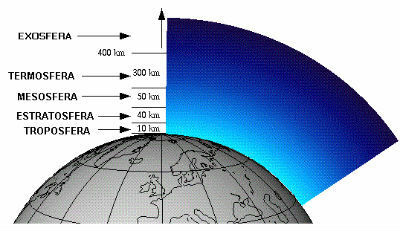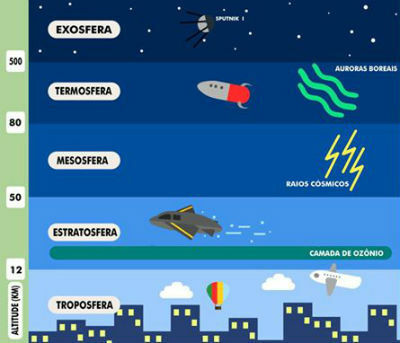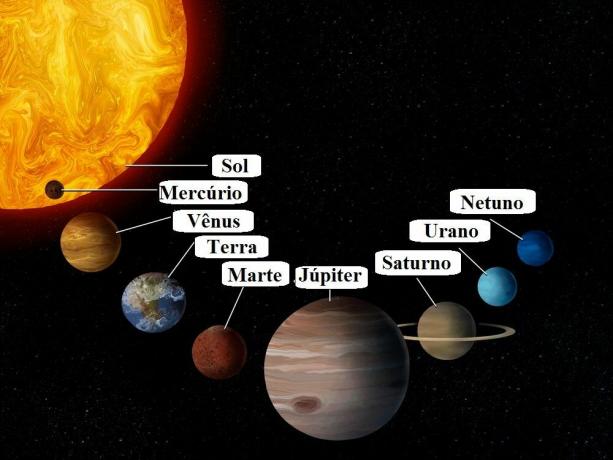The ionosphere is one of the layers of the atmosphere characteristic for suffering ionization from solar radiation.
Thus, it is very active and its size decreases according to the energy it absorbs from the Sun.
The height also varies according to the energy it absorbs and can reach between 50 km to 1000 km above the Earth's surface.
Features

The ionosphere is considered a part of the thermosphere.
In total, it covers 0.1% of the Earth's atmosphere. Still, it is an important part of containing solar radiation.
Radiation is responsible for triggering the ionization process. The phenomenon depends on solar activity, such as solar cycles, sunspots and geographic location.
Ionosphere Layers
The ionosphere is divided into three layers: D, E and F.
The behavior of each region of the ionosphere is based on the height and wavelength resulting from the emission of radiation from the Sun.
- Layer D: Inner layer, with about 50 to 95 km of altitude. It absorbs most of the energetic radiation.
- Layer E: It has an altitude of 95 to 160 km, absorbs x-rays.
- Layer F: Displays between 160 to 1,000 km of altitude. It is subdivided into F1, F2 and F3. It is the layer that absorbs ultraviolet rays and has the highest electron density.
As the layers are influenced by solar radiation, at night there are only layers F and E.
radio waves
The ionosphere influences the propagation of radio waves to places far away from Earth.
Because they contain ions and electrons, radio waves are reflected from the ionosphere.
In regions D and E, AM radio waves are reflected. Short-length radio waves are reflected in the F region.
magnetosphere
The magnetosphere is the region of the ionosphere where the amount of ions and electrons is very large.
This region is greatly affected by the magnetic fields of the Earth and the Sun. When superimposed, these forces create the phenomena known as Northern Lights and austral dawn. The phenomenon results from ionization, which can be observed at terrestrial poles.
Atmosphere layers
The atmosphere is divided into the following layers:
- Troposphere: Lower layer in which we live and where meteorological phenomena occur.
- Stratosphere: Layer that appears right after the transition layer with the troposphere, the tropopause. Where is the ozone layer.
- mesosphere: Layer that appears after the stratosphere, about 85 kilometers long.
- thermosphere: Largest layer of the Earth's atmosphere and extends up to 600 kilometers in altitude.
- exosphere: Last layer of the atmosphere before entering space, located between 500 and 10,000 kilometers in altitude.
Learn more, read too:
- What is Atmosphere?
- Atmosphere layers



